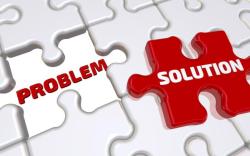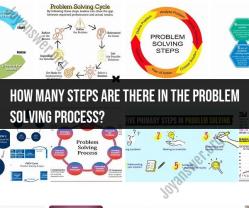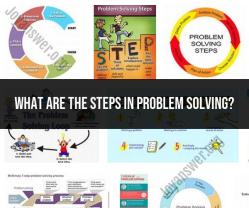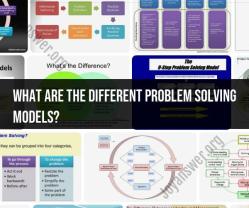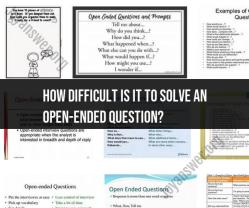What are the steps in problem solving?
Problem-solving is a systematic process that involves several steps to identify, analyze, and resolve a problem. Here is a step-by-step approach to problem-solving:
1. Problem Identification:
- The first step is to clearly define and identify the problem. Understand what the issue is, its impact, and why it needs to be solved. Ask questions to gather information about the problem.
2. Problem Analysis:
- Analyze the problem by breaking it down into its components. Try to understand the underlying causes and factors contributing to the problem. This may involve research, data collection, and examining patterns.
3. Goal Setting:
- Define specific, measurable, achievable, relevant, and time-bound (SMART) goals or objectives. Determine what you want to achieve by solving the problem. Your goals should be aligned with the problem's resolution.
4. Solution Generation:
- Brainstorm potential solutions and alternatives to the problem. Encourage creativity and diverse perspectives during this phase. Avoid judgment and criticism of ideas at this stage.
5. Evaluation of Options:
- Assess the pros and cons of each potential solution. Consider factors such as feasibility, risks, costs, and benefits associated with each option. Compare the solutions against your defined goals.
6. Decision-Making:
- Select the most suitable solution based on the evaluation. Make an informed decision that aligns with your goals and values. Be prepared to justify your choice.
7. Implementation Planning:
- Develop a detailed plan for implementing the chosen solution. Define action steps, responsibilities, timelines, and necessary resources. Ensure everyone involved understands their roles.
8. Implementation:
- Put the plan into action, following the defined steps and timelines. Monitor progress closely and address any issues or obstacles that arise during implementation.
9. Monitoring and Evaluation:
- Continuously assess the progress and effectiveness of the implemented solution. Collect feedback, data, and metrics to gauge success and make adjustments as needed.
10. Adjustment and Refinement:- If the solution is not achieving the desired results, be open to adjustments and refinements. Modify the plan as necessary to improve outcomes.
11. Closure:- Once the problem is resolved or the goal is achieved, formally close the project or initiative. Celebrate successes and acknowledge the efforts of those involved.
12. Documentation and Learning:- Document the problem-solving process, including the steps taken, decisions made, and outcomes achieved. Share lessons learned for future reference and improvement.
13. Continuous Improvement:- Encourage a culture of continuous improvement by applying insights gained from past problem-solving experiences to future challenges.
14. Communication:- Maintain clear and effective communication with stakeholders throughout the problem-solving process. Keep them informed of progress, changes, and outcomes.
15. Ethical Considerations:- Consider ethical principles and implications in every step of the problem-solving process. Ensure that solutions are aligned with ethical standards and values.
Effective problem-solving often requires adaptability, critical thinking, and collaboration. While these steps provide a structured approach, problem-solving is not always linear, and it may be necessary to revisit earlier steps or iterate through the process to arrive at the best solution.



